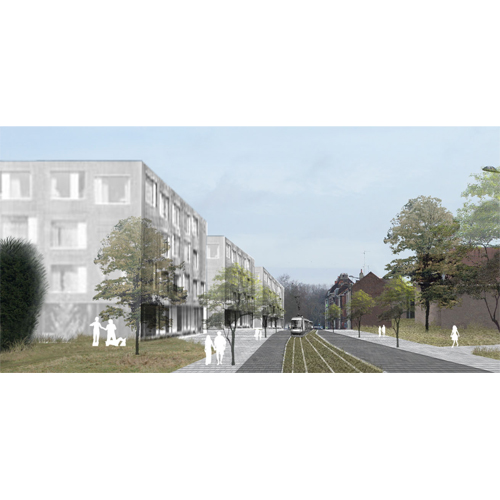Unusually, Lille still maintains its port activities within the urban fabric, close to the city center, ideally located in terms of mobility, between the intersection of the A25 and the Deule Canal. It is surrounded by different urban tissues and major equipments. The harbor area itself is facing a duality between the interests of urban conquest (which can gain new relationships with its waterfronts, like many other European cities) and the today’s large need (because of environmental and energy crisis) to maximize carriage of goods by water- and railways.
The real lack of integration of the port in its territory is reflected by the lack of visibility and connection with the city center. This area is separated by the ‘Moselle’ Avenue that turns its back towards the port.
The proposal therefore aims to rethink this limit as a new boulevard, as a diaphragm regulating relations between the harbor, the waterfront promenade and the city. Thus, it could offer a maximum permeability while being compatible with the program in each activity ‘sector’.
The strategy can take place by changing the section of the Boulevard, compacting the roads towards the city, releasing the open band near the port for new uses, such as densification areas, linear parks, equipments, facilities, etc. All this followed by the ability to integrate a future line of tram-train, to reorganize the car traffic and to minimize the impact of intersections and roundabouts, so that the continuity of soft mobility (pedestrians and cyclists) do not have to be interrupted. Finally the restoration of a continuous sequence of vegetated spaces (redevelopment of existing green spaces) and a better definition of the various public spaces could give a completely new image to the project area.
In particular, the segments of the boulevard in contact with the historic center are of strategic importance to the project. The tramway could be the densification tool for new constructions and the intensification of new and existing uses, together reinforcing the attractiveness of the site at the metropolitan level. |

![]()